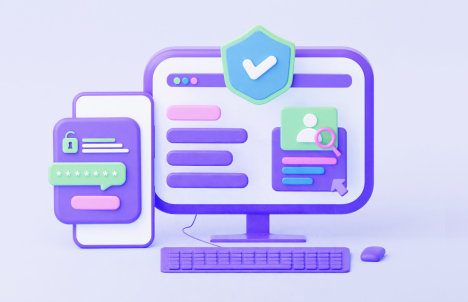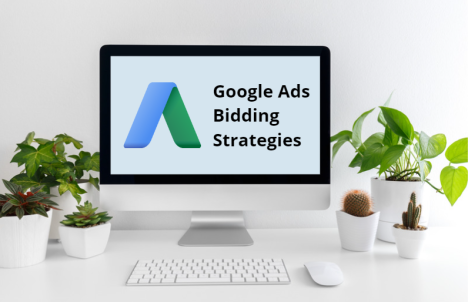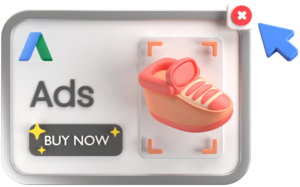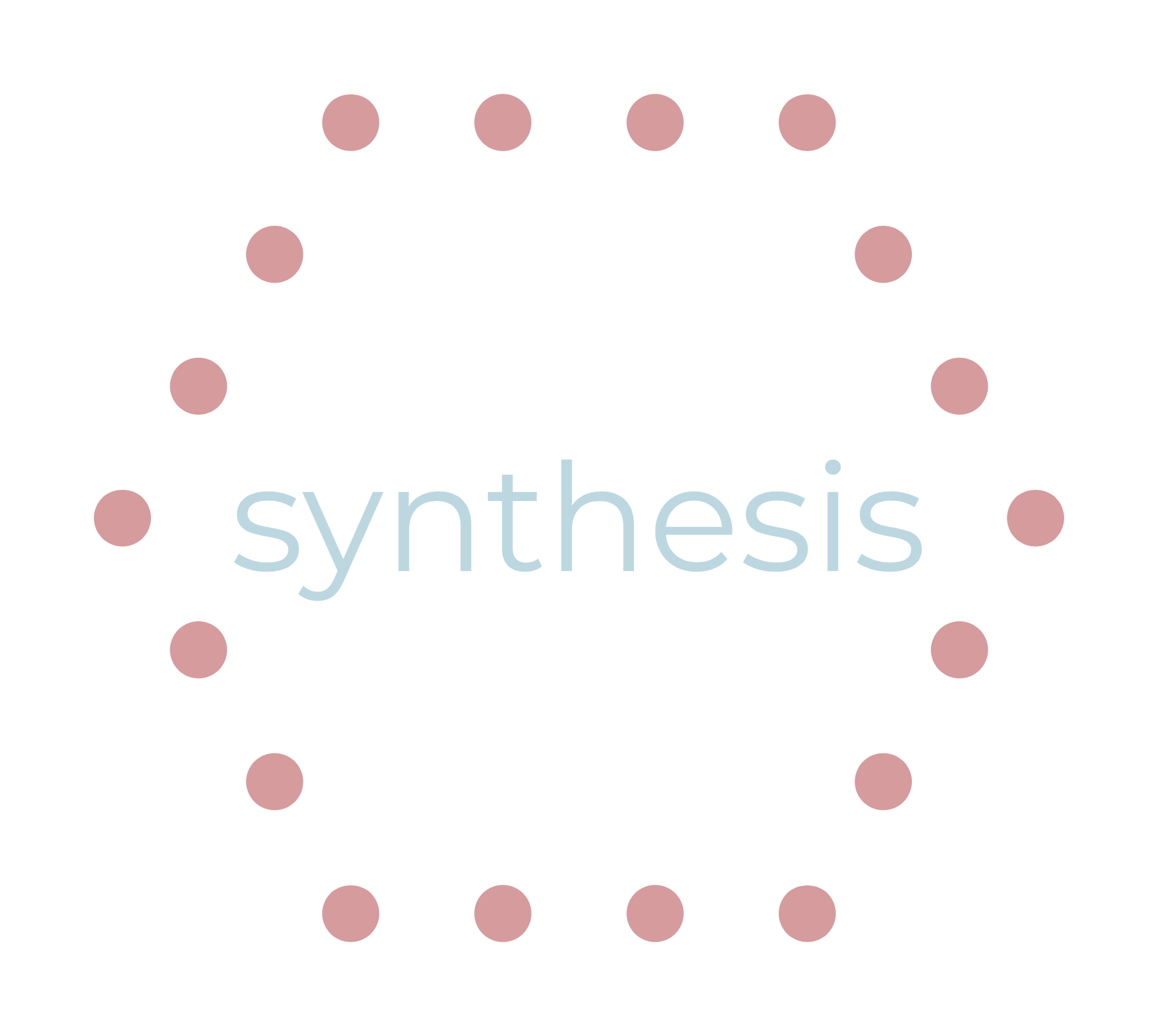In today’s digital age, businesses have a multitude of advertising options to choose from. One of the most effective and widely used advertising platforms is Google Ads, which allows businesses to reach their target audience through search engine results pages (SERPs).
While Google Ads is often associated with B2C advertising, it is also an incredibly valuable tool for B2B companies. B2B Google Ads can help businesses generate high-quality leads, increase brand awareness, and boost sales. However, to achieve maximum results, it’s crucial to understand how to optimize your ads for your specific audience and goals.
In this blog post, we’ll explore why you need Google Ads as part of your B2B PPC strategy and how to optimize your ads for maximum results, from defining your audience and conducting keyword research to crafting effective ad copy and tracking your results.
Let’s get started!
. . .
Contents
. . .
Defining Your Audience

Understanding Your Target Audience
Understanding your target audience is crucial when optimizing B2B Google Ads because it allows you to tailor your ads to your audience’s specific needs, pain points, and buying behaviors.
By conducting thorough research, you can gain valuable insight into your audience’s demographics, interests, and challenges, which can help you create more effective ad copy, choose the right keywords, and design landing pages that resonate with your audience.
When you understand your target audience, you can create effective ad campaigns that speak directly to them, increasing the chances of generating high-quality leads and driving sales.
Creating Buyer Personas
Creating buyer personas plays a huge role in understanding your target audience because it allows you to narrow down your ideal customer base and helps you understand who they are in greater detail.
Buyer personas (i.e. customer profiles) are fictional representations of a business’s ideal customers based on real data and research gathered from platforms where businesses and their audiences interact. A well-defined B2B buyer persona should include a mix of demographic, background, social, and behavioral information.
When you know exactly who you’re targeting, you can create ads that speak directly to their needs and desires, making it more likely that they will engage with your ads and convert them into qualified leads or customers.
Conducting Market Research
Although conducting market research sounds like an overwhelming process, it’s actually easier than you might think. In most cases, you can look at your Google Analytics, social media analytics, CRM data, or conduct surveys and focus groups to obtain information. This process helps businesses learn their target audience’s needs, challenges, goals, and preferences.
During the research process, businesses should collect data on their audience’s demographics, job titles, company size, industry, and pain points. This data can then be used to create detailed buyer personas that represent the ideal customers for the business.
Note: As you gather data, focus on key platforms and mediums that will provide you with relevant and accurate information about your unique audience.
Tailoring Your Ads to Your Audience
Tailoring your B2B Google Ads to your audience ensures that they’re highly relevant and resonate with them. During this process, consider the ad format, tone, and messaging when tailoring your ads. For example, if your unique audience is in the technology industry, you may want to use technical language and highlight the features and benefits of your products or services.
By understanding your audience’s pain points, challenges, and buying behaviors, you can create ad copy that addresses their specific needs and offers solutions.
Establishing Your Goals

Knowing the Value of a New Customer
By understanding the lifetime value of a customer, you can set realistic targets for your advertising campaigns and determine how much you’re willing to spend to acquire a new customer. This information can help you set your bidding strategy and adjust your advertising budget to maximize your ROI.
Additionally, knowing the value of a new customer can help you prioritize which keywords, targeting, and ad messaging to focus on, and adjust your campaigns to attract high-quality leads that are more likely to convert into long-term customers.
Identifying How Much You're Willing to Pay for a Lead
Identifying how much you’re willing to pay for a lead is an important step when optimizing B2B Google Ads. By determining the maximum cost per lead that you can afford to acquire and still maintain profitability, you can adjust your bidding strategy and set realistic goals for your campaigns. This requires you to analyze your conversion rates, average order value, and profit margins to determine how much you can afford to pay for a new lead.
By keeping track of your cost per lead and continually refining your bidding strategy, you can ensure that you’re getting the most out of your advertising budget and attracting high-quality leads that are more likely to convert into long-term customers.
Determining Your Monthly Advertising Budget
Determining your monthly advertising budget for B2B Google Ads can be challenging, but it’s crucial to ensure that you’re investing the right amount to achieve your business goals.
One way to determine your budget is to use the 10% rule, where you allocate 10% of your revenue toward advertising. Another approach is to calculate your customer acquisition cost (CAC) and lifetime value (LTV) and determine how much you’re willing to spend to acquire a new customer. You can also consider the cost per click (CPC) for your keywords and the number of clicks you need to generate a lead or sale.
Ultimately, your budget should be aligned with your business goals, and you should be prepared to adjust it as you optimize your campaigns and measure their performance.
Keyword Research

Conducting Thorough Keyword Research
Once you’ve narrowed down your target audience, it’s important to conduct thorough keyword research for your B2B Google Ads. This process ensures that businesses are targeting the right keywords that their audience is searching for.
Keyword research involves identifying and analyzing relevant keywords and phrases that businesses can use in their ad copy and targeting. Using tools such as Google Keyword Planner, SEMrush, and Ahrefs can help businesses identify high-volume, low-competition keywords that are relevant to their industry and audience.
Additionally, you should also consider long-tail keywords. Long-tail keywords are longer, more specific keyword phrases (i.e. 3+ words) with a lower search volume but a higher chance of conversion. These keywords are typically targeted and specific to a particular niche or industry, making them highly relevant to the target audience. Targeting long-tail keywords can also help businesses compete with larger companies that may be targeting broader, more generic keywords.
By conducting thorough keyword research, businesses can create more effective Google Ads that are highly targeted and generate high-quality leads.
Using Negative Keywords
While it’s essential to create a list of keywords you know your target audience will search for, it’s just as important to use negative keywords. Negative keywords are keywords that businesses exclude from their targeting because they aren’t relevant to their product or service. By using negative keywords, you can prevent your ads from appearing in irrelevant search results, avoid irrelevant clicks, and target users who are unlikely to convert.
For example, if a business sells enterprise software and wants to exclude searches for “free software,” they can add “free” as a negative keyword to their campaign. This will prevent their ads from appearing in searches for free software, saving them money on clicks that are unlikely to convert.
Overall, using negative keywords is a very effective way for businesses to refine their targeting and improve the efficiency of their Google Ads.
Competitor Analysis
Once you’ve completed keyword research for your ad campaign, it’s time to analyze your competitors. Competitor analysis can help you understand your competition, identify unique selling propositions (USPs), and stay up-to-date with the latest industry trends, tactics, and marketing strategies to differentiate yourself from the competition.
In addition to keyword targeting strategies, you should also consider their ad copy and messaging, landing pages, and ad placement and bidding strategies to gain insight into your competition’s strengths and weaknesses and identify gaps in the market.
Ad Copy

Crafting Compelling Ad Copy
After you’ve determined and gathered a list of keywords for your ad campaign, it’s time to create effective ad copy to target and draw in your ideal audience. Crafting compelling ad copy for B2B Google Ads requires careful consideration of your target audience, value proposition, and desired action.
Here are 7 factors you should consider when creating effective ad copy:
Identify the unique value proposition: Businesses should identify the unique value proposition that sets them apart from their competition and highlight it in their ad copy.
Be clear & concise: Ad copy should be clear and concise, using simple language that is easy to understand.
Use strong headlines: The headline is the first thing users see, so it should be attention-grabbing and clearly communicate the benefit of the product or service.
Include a call-to-action: Ad copy should include a clear call-to-action that tells users what action to take, such as “request a demo” or “download our white paper.”
Use social proof: Including social proof, such as customer testimonials or industry awards, can help build credibility and trust with potential customers.
Tailor messaging to the target audience: Ad copy should be tailored to the target audience, using language and messaging that resonates with them.
Highlight key features & benefits: Ad copy should highlight the key features and benefits of the product or service, using specific examples and data to demonstrate value.
By following these helpful tips, you can create compelling ad copy that effectively communicates the value of your products or services and encourages users to take action.
Highlighting Your Unique Selling Proposition
Highlighting your unique selling propositions (USPs) is an essential part of optimizing your B2B Google Ads because it helps differentiate yourself from the competition and communicate the value of your product or service to potential customers.
Here are 5 steps for highlighting USPs:
Identify your USPs: First, businesses need to identify their unique selling propositions by analyzing their product or service and determining what sets them apart from their competition.
Incorporate USPs in ad copy: Once businesses have identified their USPs, they should incorporate them into their ad copy to communicate the value of their product or service to potential customers. This can be done in the headline, body text, or call-to-action.
Use data to support USPs: To make USPs more compelling, businesses should use data and statistics to support their claims. For example, if a business claims to have a faster, more efficient product, they should use data to show how much faster and more efficient their products are compared to their competition.
Leverage social proof: Including social proof, such as customer testimonials or industry awards, can help support USPs and build credibility and trust with potential customers.
Tailor messaging to target audience: Finally, businesses should tailor their messaging to their target audience, using language and messaging that resonates with them and highlights the specific benefits that matter most to them.
By following these steps, your business can effectively highlight its USPs and differentiate itself from the surrounding competition.
Addressing Pain Points & Offering Solutions
Identifying the pain points of potential customers and offering solutions can help businesses demonstrate the value of their offerings and build trust and credibility.
To address pain points, first conduct market research to understand the needs and challenges of your target audience. Additionally, use this information to create ad copy that addresses these pain points and offers solutions. This can be done through features and benefits, customer testimonials, case studies, and other forms of social proof.
By focusing on addressing pain points and offering solutions, businesses can create more effective Google Ads that resonate with their target audience and drive conversions.
Using Effective Calls-to-Action
Using effective calls-to-action (CTAs) is critical for optimizing B2B Google Ads because it tells users what action to take and can significantly impact conversion rates.
Here are 6 tips for creating effective CTAs:
Be clear & specific: CTAs should be clear and specific about the action that users should take, such as “request a demo,” “download our whitepaper,” or “schedule a consultation.”
Use action-oriented language: CTAs should use action-oriented language to encourage users to take action, such as “get started,” “sign up,” or “learn more.”
Create a sense of urgency: To increase the sense of urgency, CTAs can include phrases such as “limited time offer,” “act now,” or “don’t miss out.”
Place CTAs strategically: CTAs should be placed strategically in the ad copy, such as at the end of the headline or in the description text, and should stand out visually to catch users’ attention.
Test & optimize: Businesses should test different CTAs and analyze their performance to determine which ones are most effective in driving conversions.
Use personalized CTAs: To increase the relevance of the CTA, businesses can use personalized CTAs based on the user’s behavior or demographics, such as “claim your exclusive offer” for returning visitors.
By following these tips, businesses can create effective CTAs that encourage users to take action and improve the performance of their Google Ads.
Landing Pages

Designing Effective Landing Pages That Align With the Ad Copy
Once you’ve carefully crafted effective ad copy, the next important step is to design landing pages for a seamless user experience. First impressions are important–this is the first point of contact for users after they’ve clicked on your ad.
To create effective landing pages, businesses must ensure that the page is relevant to the ad copy and the user’s search intent. The page should be visually appealing, easy to navigate, and optimized for mobile devices, while also having a clear and compelling headline, a strong value proposition, and a clear call-to-action (CTA). Additionally, it should also provide users with all the necessary information about the product or service, including features and benefits, customer testimonials, and social proof.
It’s essential that the landing page aligns with the ad copy and the user’s search intent. If it doesn’t, it can lead to confusion and frustration and, ultimately, result in a lost opportunity for the business.
Optimizing for Conversions
Optimizing your landing pages is a major step in generating leads and converting them to customers. It is the bridge that will take prospects from clicking on your ad to completing a transaction with your business.
To ensure a seamless journey, businesses should follow these steps when optimizing for conversions:
Identify the goal of the landing page – whether it’s lead generation, sales, or something else.
Use a clear and compelling headline that communicates the value proposition of the product or service.
Use high-quality visuals that are relevant to the product or service.
Use a clear and concise call-to-action (CTA) that prompts users to take the desired action.
Minimize the number of form fields to reduce friction and make it easy for users to complete the form.
Provide social proof through customer testimonials, reviews, and case studies to build trust with potential customers.
Ensure the landing page is optimized for mobile devices.
- Test and analyze different elements of the landing page, such as the headline, CTA, form fields, and visuals, to see what works best for your target audience.
By following these steps, businesses can create landing pages that will drive more leads and sales from their B2B Google Ads.
Testing Landing Page Variations
After you’ve optimized your landing pages for conversion, testing them and determining your best landing page variations is what will help you achieve your business goals and reach maximum performance.
To test landing page variations for B2B Google Ads, businesses should follow these 6 steps:
Define the metrics that will be used to measure success, such as click-through rate, conversion rate, or bounce rate.
Create different versions of the landing page that feature variations in the headline, CTA, visuals, or form fields.
Use A/B testing to compare the performance of the different landing page variations. This involves randomly showing different versions of the landing page to users and measuring which version performs best.
Analyze the results of the A/B test to determine which version of the landing page is the most effective at achieving the defined goals.
Implement the winning version of the landing page and continue to test and optimize as necessary.
Repeat the testing process periodically to ensure that the landing page continues to perform optimally.
By testing landing page variations, businesses can identify the most effective elements of their landing page and make data-driven decisions about how to optimize their B2B Google Ads for maximum performance.
Bidding Strategies

Understanding Different Bidding Strategies
Before you’re able to track and measure the results of your B2B Google Ads, there are various paid media strategies you must understand in order to fully optimize your ads. In this case, bidding strategies are an essential part of optimizing your Google Ads and help businesses determine how much they’re willing to pay for a click or conversion. Different strategies can be more effective depending on the business’s goals, budget, and target audience.
For example, a business may choose a manual CPC (cost-per-click) strategy if they want more control over their bids and have a limited budget, while an automated bidding strategy like target CPA (cost-per-acquisition) may be more effective if they want to maximize conversions within a certain cost range.
It’s important to understand the strengths and limitations of each bidding strategy and select the one that aligns with the business’s goals and resources.
Choosing the Right Bidding Strategy for Your Goals
Choosing the right bidding strategy for B2B Google Ads depends on the business’s specific goals and budget.
The first step is identifying the primary campaign objective, such as generating leads, driving website traffic, or boosting brand awareness. Once the goal is determined, businesses can choose from various bidding strategies such as manual CPC, automated bidding, or target CPA.
For example, if the objective is to drive website traffic, a manual CPC strategy may be effective, where the business can set maximum CPC bids for each keyword. If the goal is to maximize conversions within a specific CPA, a target CPA bidding strategy can be used, where Google Ads automatically sets bids to achieve the target CPA.
Another important consideration is the budget, as some bidding strategies may require a higher budget than others. You can test different bidding strategies and analyze their performance to choose the one that best aligns with your budget and goals.
Overall, it’s important to continually monitor and adjust bidding strategies to optimize campaign performance and achieve maximum results.
Setting Bids Based on Keyword Performance
Setting bids based on keyword performance for your B2B Google Ads is essential as it allows businesses to maximize their return on investment (ROI) and achieve their desired campaign objectives.
To set bids based on keyword performance, businesses can follow these steps:
Analyze keyword performance metrics: Review keyword performance metrics such as click-through rate, conversion rate, cost per conversion, and impression share to determine which keywords drive the most valuable traffic and conversions.
Set bid adjustments: Based on keyword performance, adjust bids for each keyword to reflect their value to the campaign. For example, if a keyword has a high conversion rate, increase the bid to generate more traffic and conversions.
Use bid strategies: Google Ads offers various bidding strategies such as manual CPC, automated bidding, and target CPA, which can be used to set bids based on keyword performance. For example, if a business wants to maximize conversions within a specific CPA, they can use the target CPA bidding strategy, which automatically sets bids to achieve the target CPA.
Regularly monitor & adjust bids: Continually monitor keyword performance and adjust bids accordingly to optimize campaign performance and achieve maximum results. It’s important to test and refine bidding strategies to ensure they align with the campaign objectives and budget.
By setting bids based on keyword performance, businesses can ensure that they’re getting the most value from their ad campaigns and achieving their desired campaign objectives.
Utilizing Bid Adjustments
Bid adjustments can be a powerful tool for optimizing B2B Google Ads campaigns. Bid adjustments allow businesses to increase or decrease bids for specific factors that affect their campaign performance, such as device type, location, time of day, and audience demographics.
To utilize bid adjustments effectively, businesses should analyze their campaign performance data to identify trends and patterns related to these factors. For example, if you find that your ads perform better on mobile devices, you may want to increase bids for mobile devices to attract more traffic from that audience. Alternatively, if you find that your ads perform poorly during certain times of the day, you may want to decrease bids for that time period to avoid wasting your budget.
By carefully adjusting bids based on performance data, businesses can increase the efficiency and effectiveness of their campaigns and achieve their desired marketing goals.
Tracking & Measuring Results

Setting Up Conversion Tracking
Once your B2B Google Ads are up and running, you can now set up conversion tracking to measure the success of your campaigns and optimize them for maximum results. Conversion tracking allows you to track specific actions that visitors take on your website after clicking on your ad, such as filling out a contact form or making a purchase.
By setting up conversion tracking, you can measure the performance of your campaigns in terms of leads, sales, and other key metrics, and use this information to optimize your campaigns for better ROI. To set up conversion tracking, you’ll need to add a tracking code to your website, create conversion actions in your Google Ads account, and associate them with your ad campaigns.
Once set up, you’ll be able to view conversion data in your account and make data-driven decisions to improve your B2B Google Ads performance.
Monitoring Key Metrics
Monitoring key metrics for your B2B Google Ads is critical to understanding the performance of your campaigns and making data-driven decisions to optimize them.
Here are 5 key metrics to monitor when tracking and measuring your B2B Google Ads:
Click-through rate (CTR): This measures the percentage of people who click on your ads after seeing them.
Conversion rate: This measures the percentage of people who complete a desired action on your website, such as filling out a form or making a purchase, after clicking on your ad.
Cost per click (CPC): This measures how much you pay for each click on your ad.
Cost per conversion: This measures how much you pay for each conversion, which is calculated by dividing your total ad spend by the number of conversions.
- Return on ad spend (ROAS): This measures the revenue generated by your ads compared to the amount spent on them.
By monitoring these metrics, you can gain insight into how your B2B Google Ads campaigns are performing and adjust your targeting, ad copy, bidding strategy, and landing pages to improve the overall performance of your campaigns.
Making Adjustments Based on Performance
Regularly monitoring and analyzing key metrics can help you identify areas for improvement and make necessary changes to your ad campaigns. These adjustments can range from modifying ad copy and landing pages to adjusting bidding strategies and targeting options.
The ability to adapt and refine campaigns based on performance allows businesses to maximize their advertising budget and achieve the best possible results from their B2B Google Ads.
. . .
Conclusion
B2B Google Ads can be an incredibly effective tool for businesses to reach their target audience and generate new leads. By optimizing your ad campaigns based on these factors, your business can attract high-quality leads and achieve a strong return on investment.
Remember, it’s crucial to continuously analyze and adjust your approach to ensure the best possible outcomes for your advertising efforts. With a strategic and data-driven approach, using Google Ads can help your business grow and succeed in the digital age.
For more information on how to improve your B2B Google Ads strategy, please reach out for a free consultation with us. We’d love to get you started on your Synthesis Insights journey with us today!




